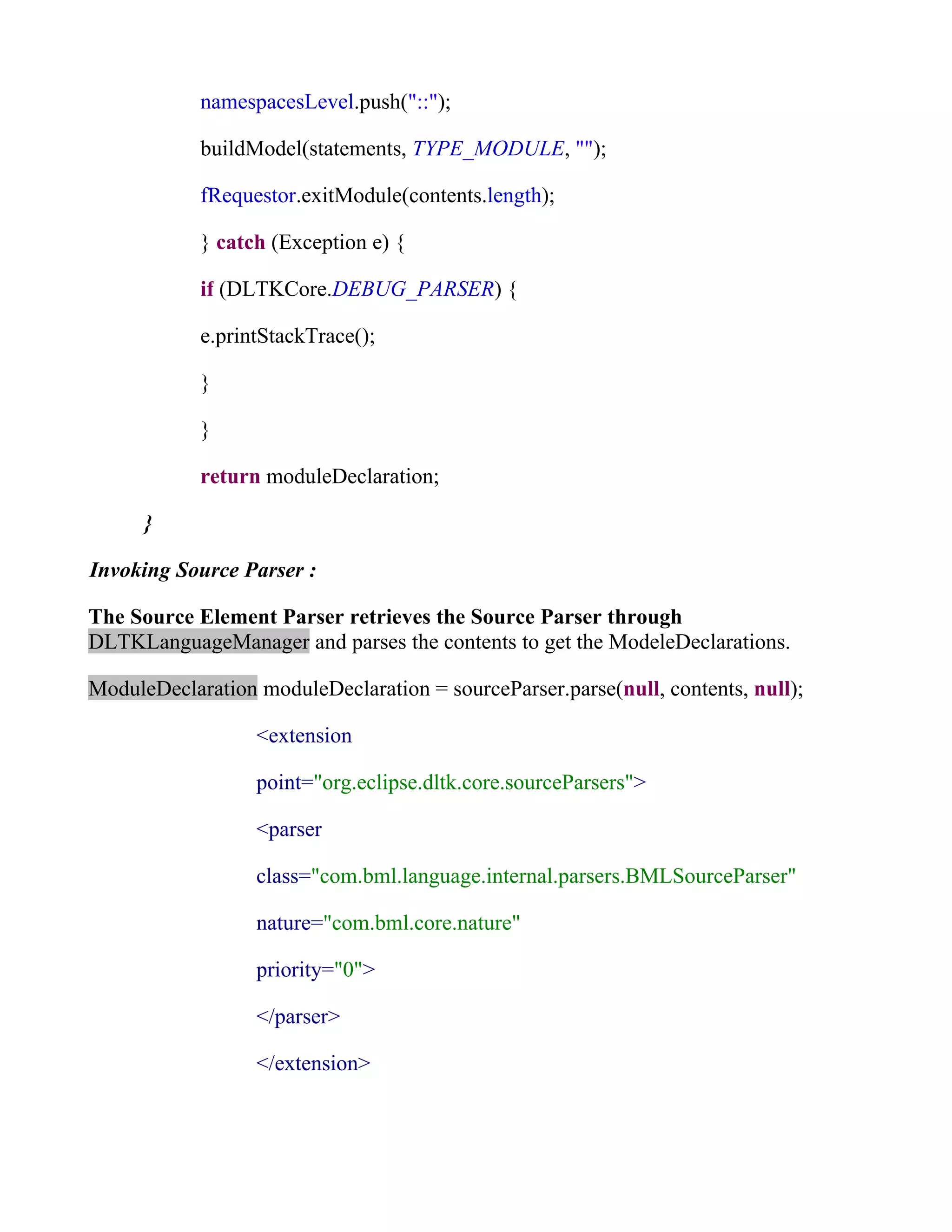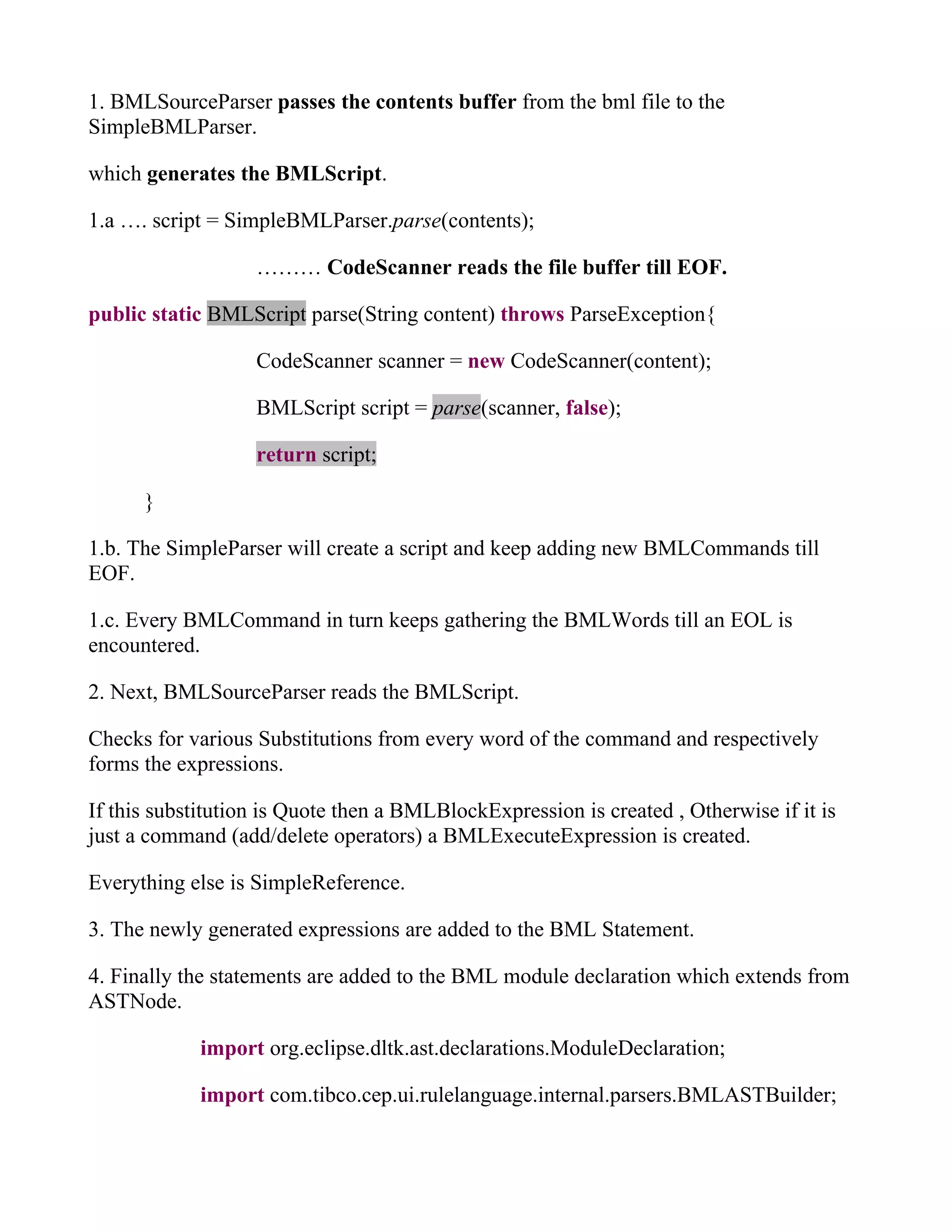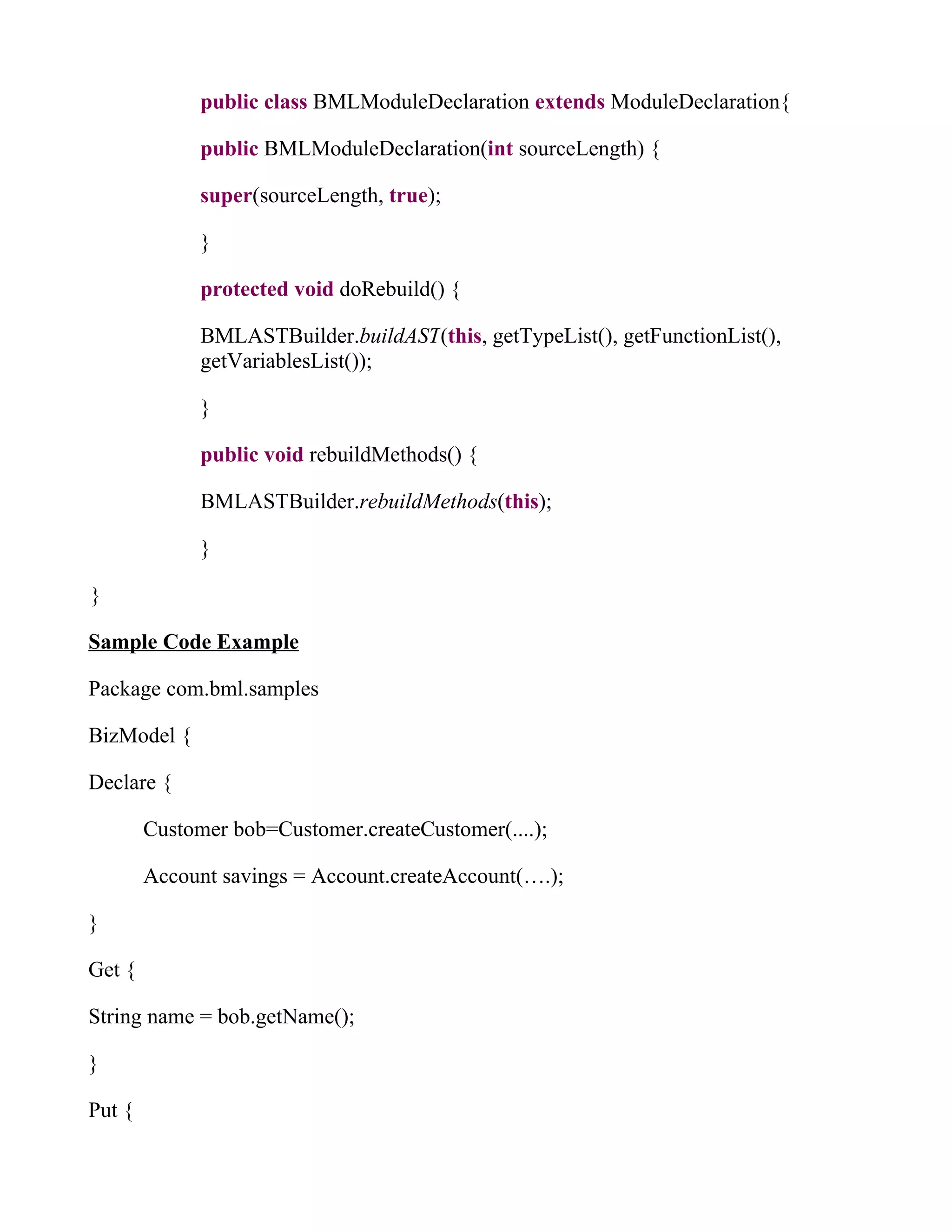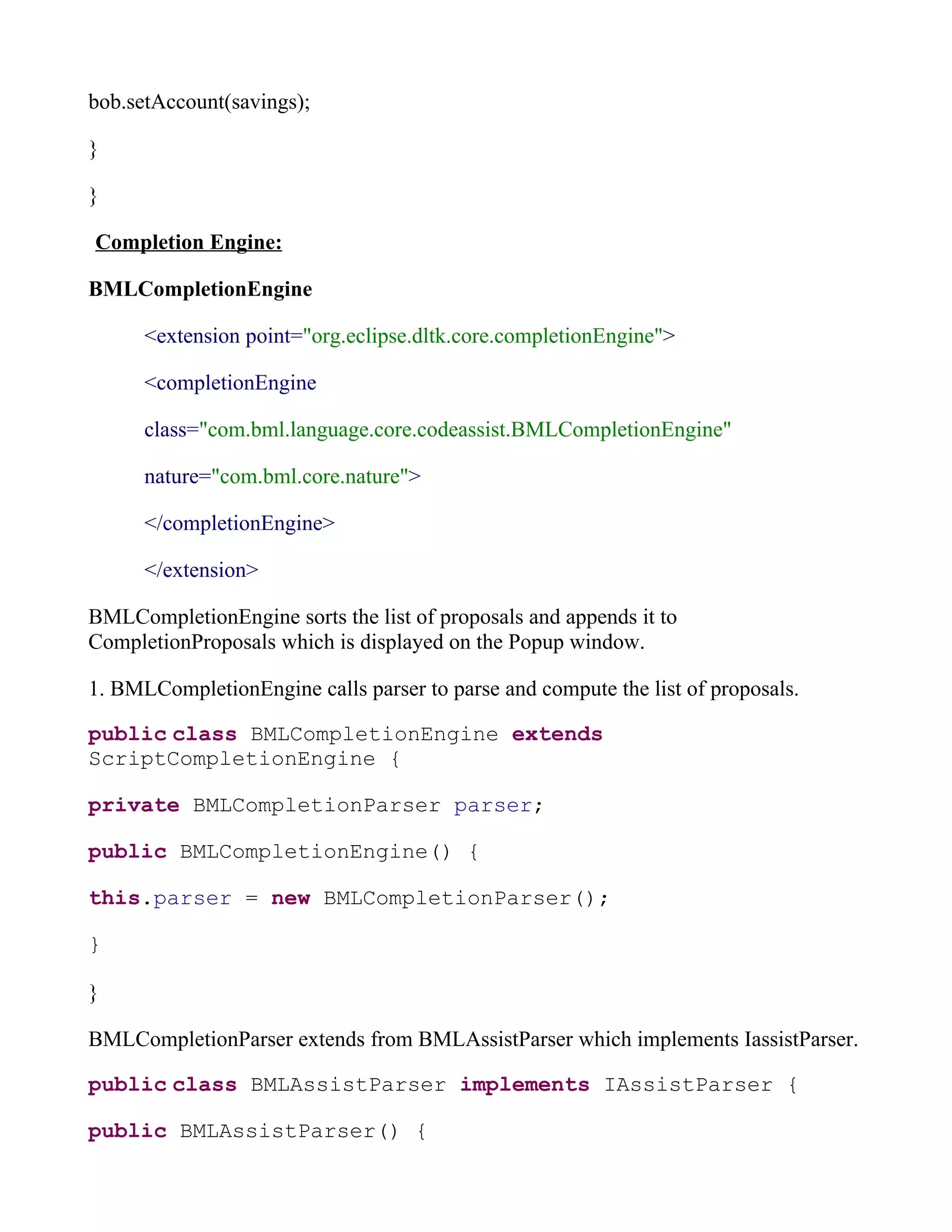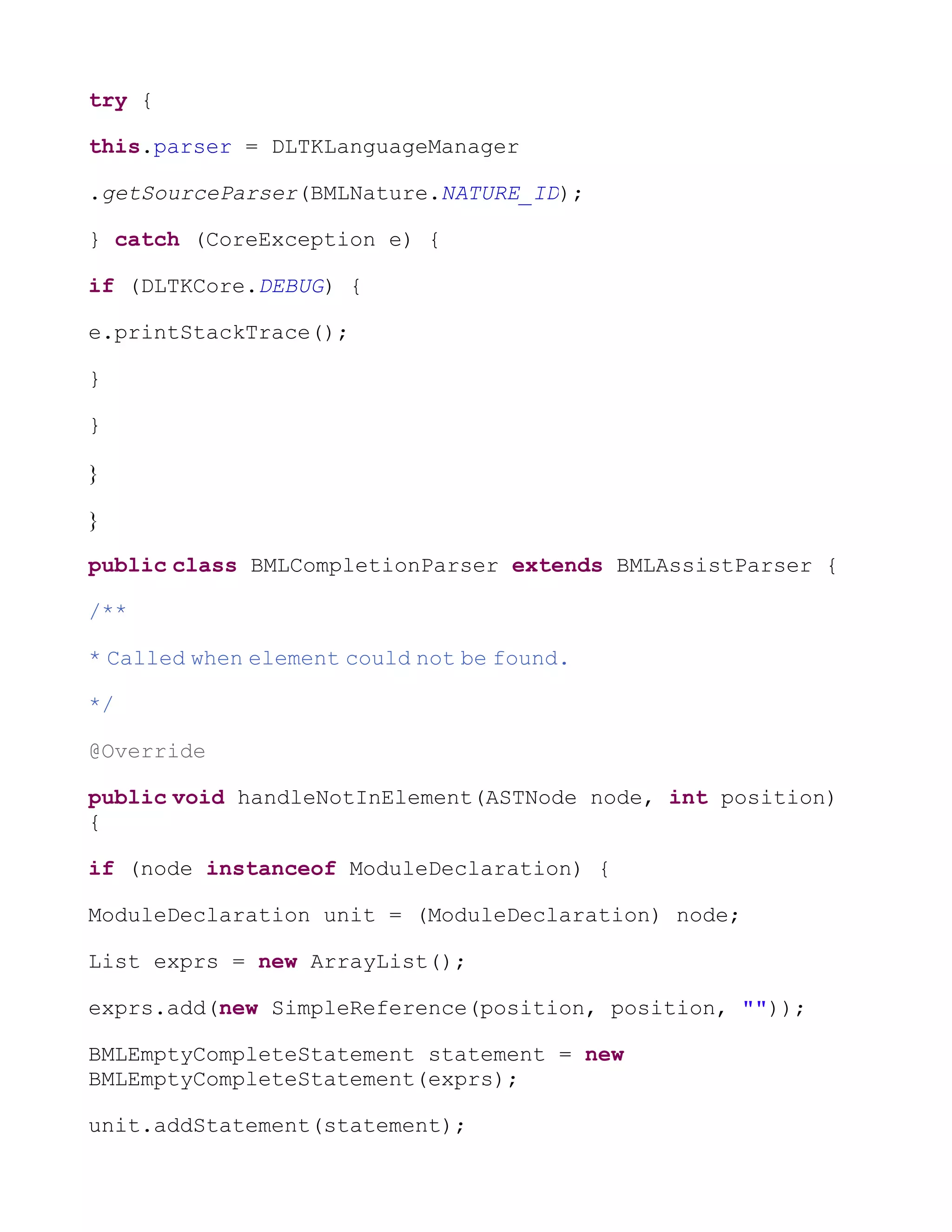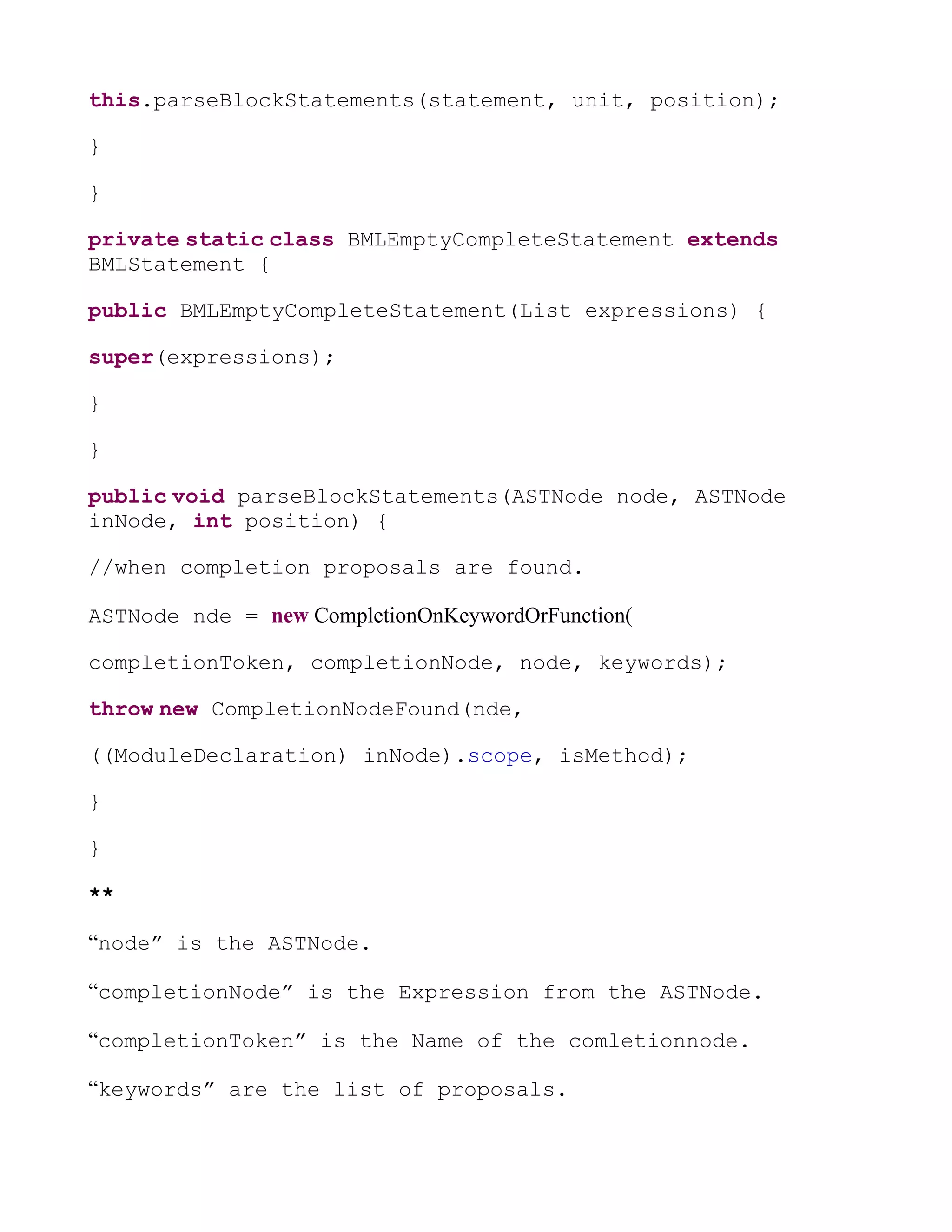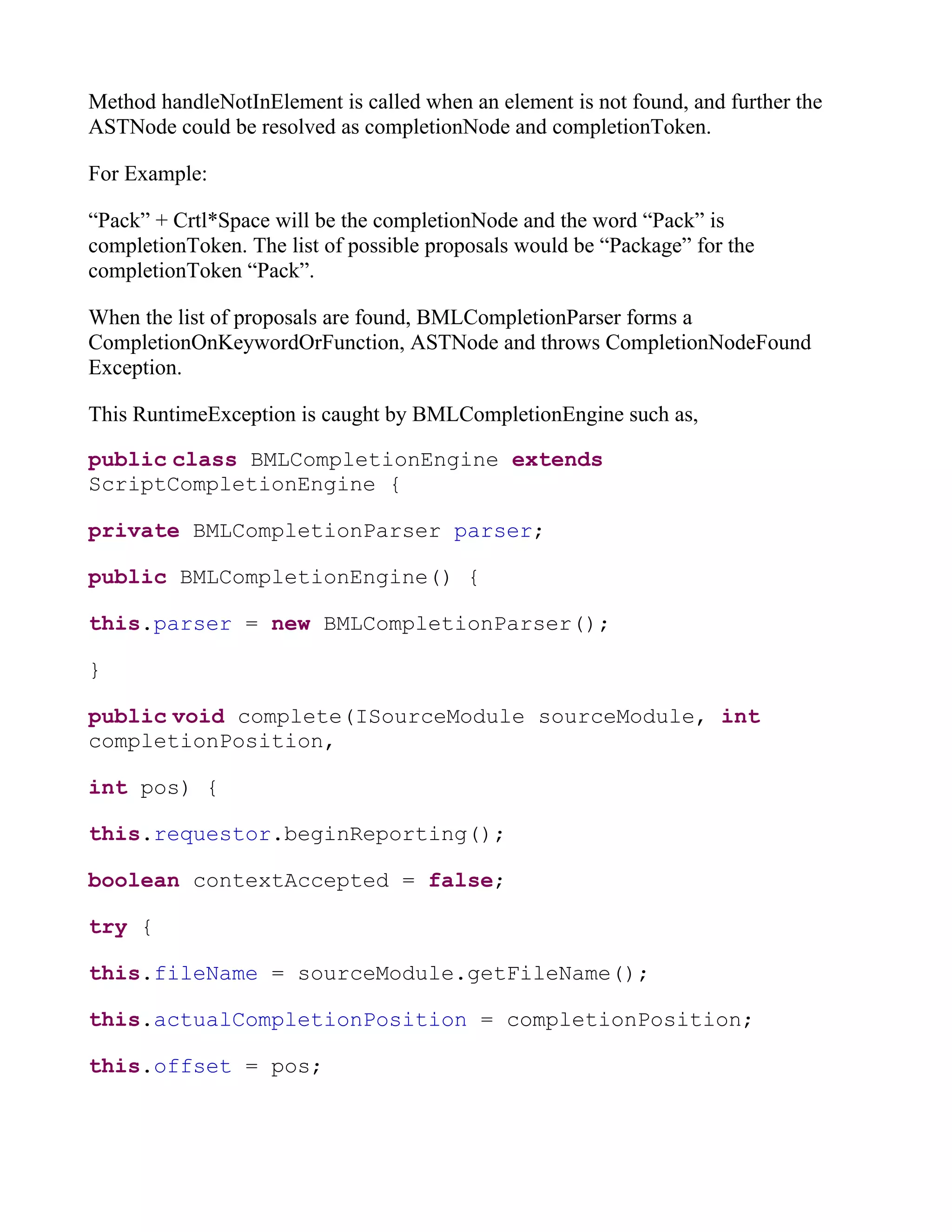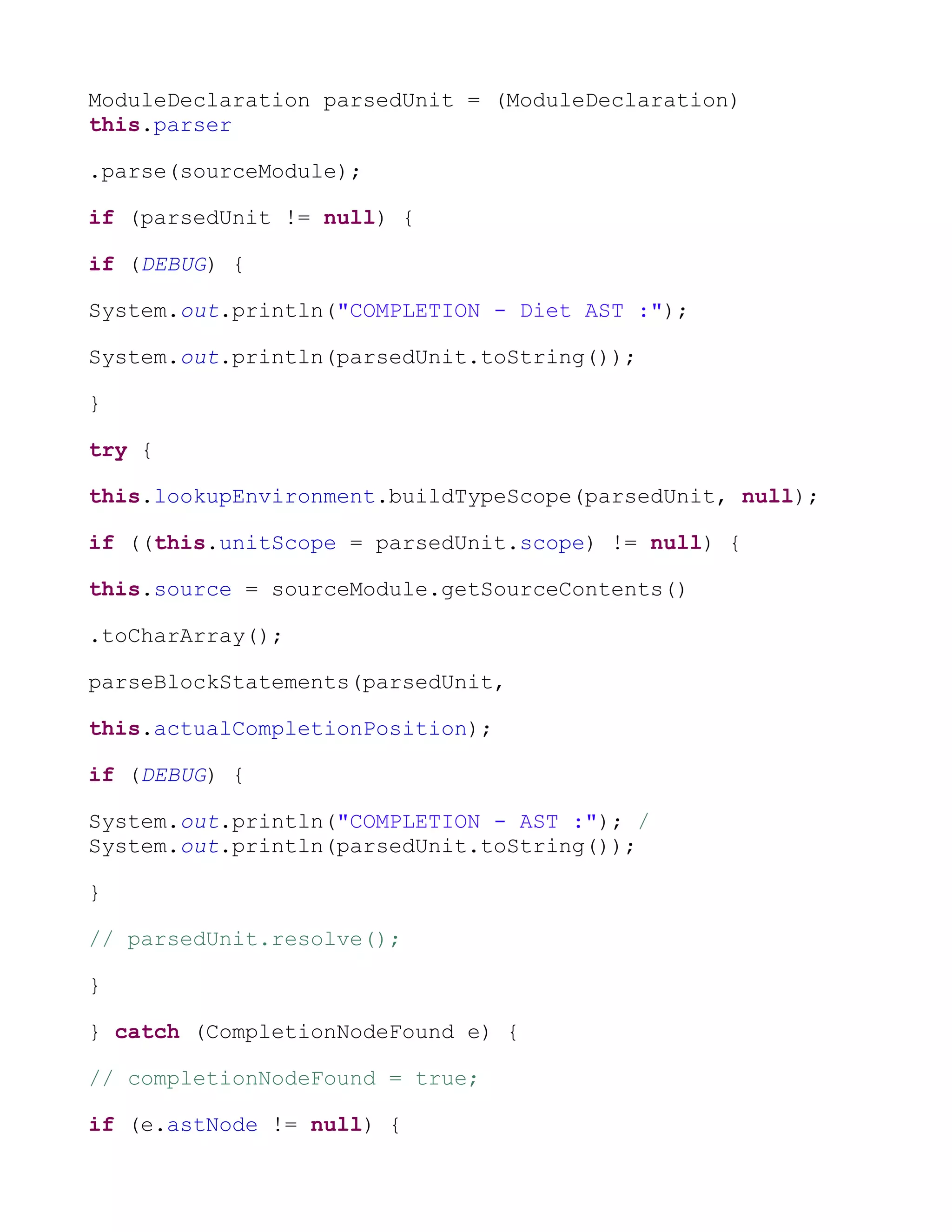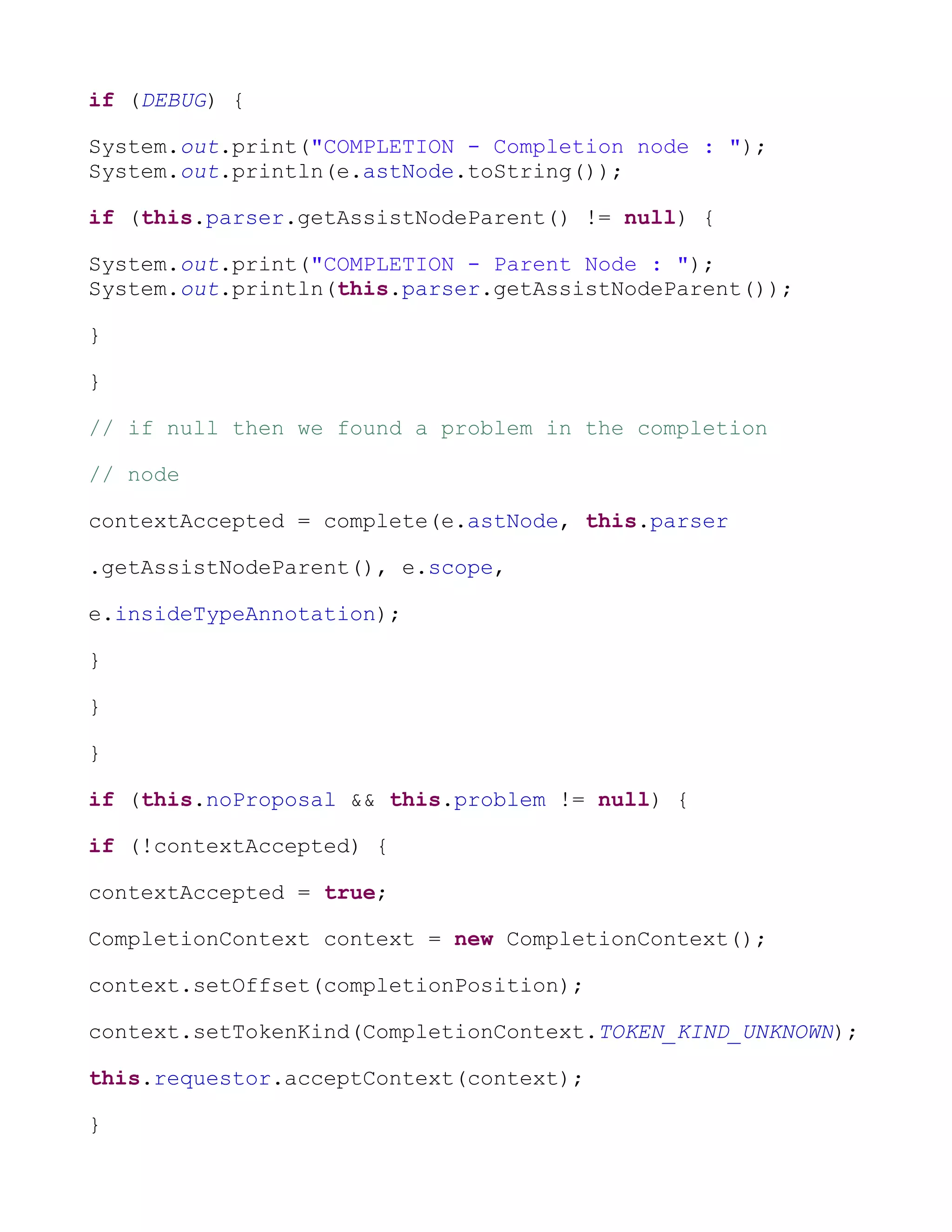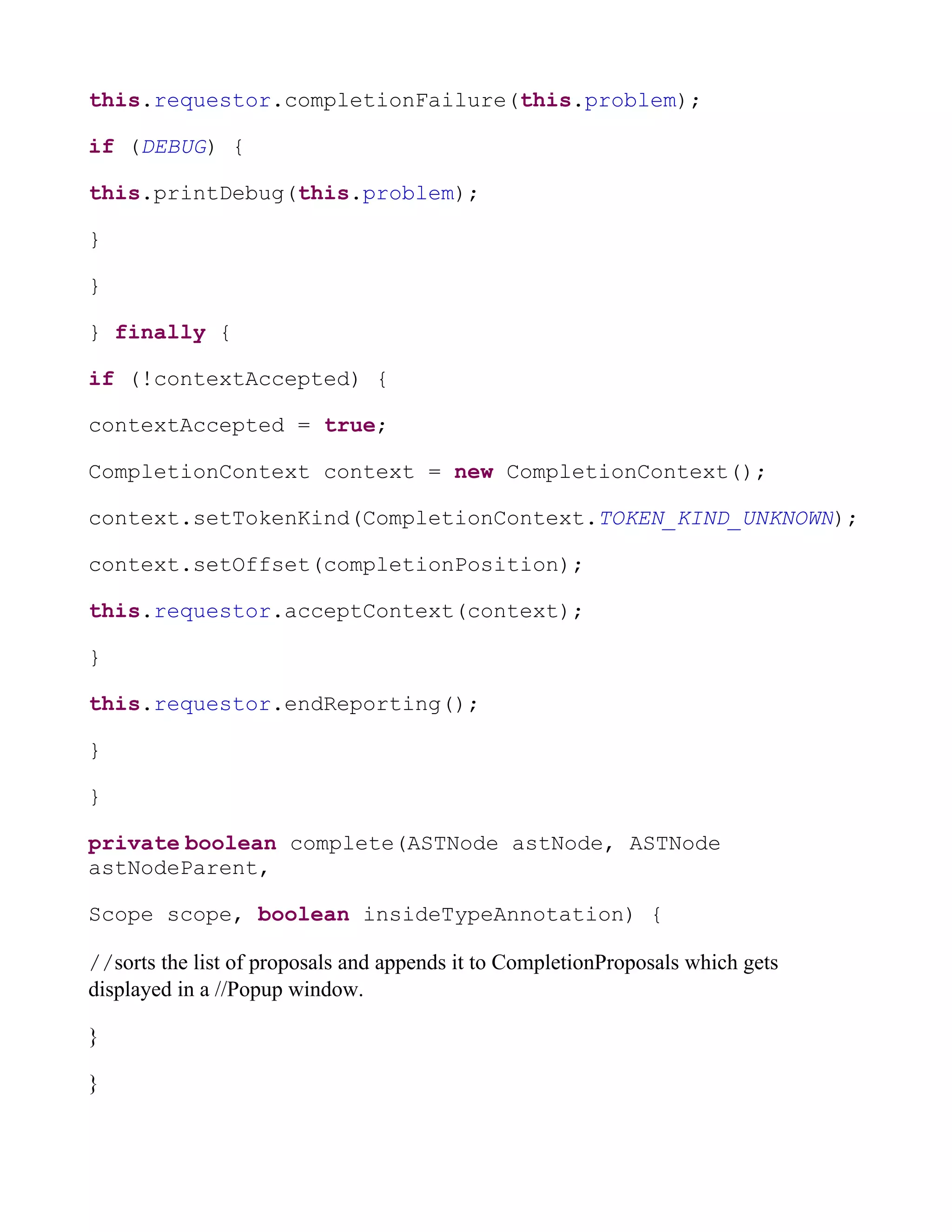The document discusses building a custom language editor leveraging the Dynamic Language Toolkit (DLTK) in Eclipse. It provides an overview of Eclipse's text editing framework and describes how DLTK can be used to build language-specific features like content assistance, navigation, debugging, and views. The key components for a DLTK-based language editor are described, including creating language toolkits, parsers, and extending existing DLTK extension points. Sample code is provided for setting up a language nature, building a parser to generate the AST model from source code, and extending DLTK's source element parser.
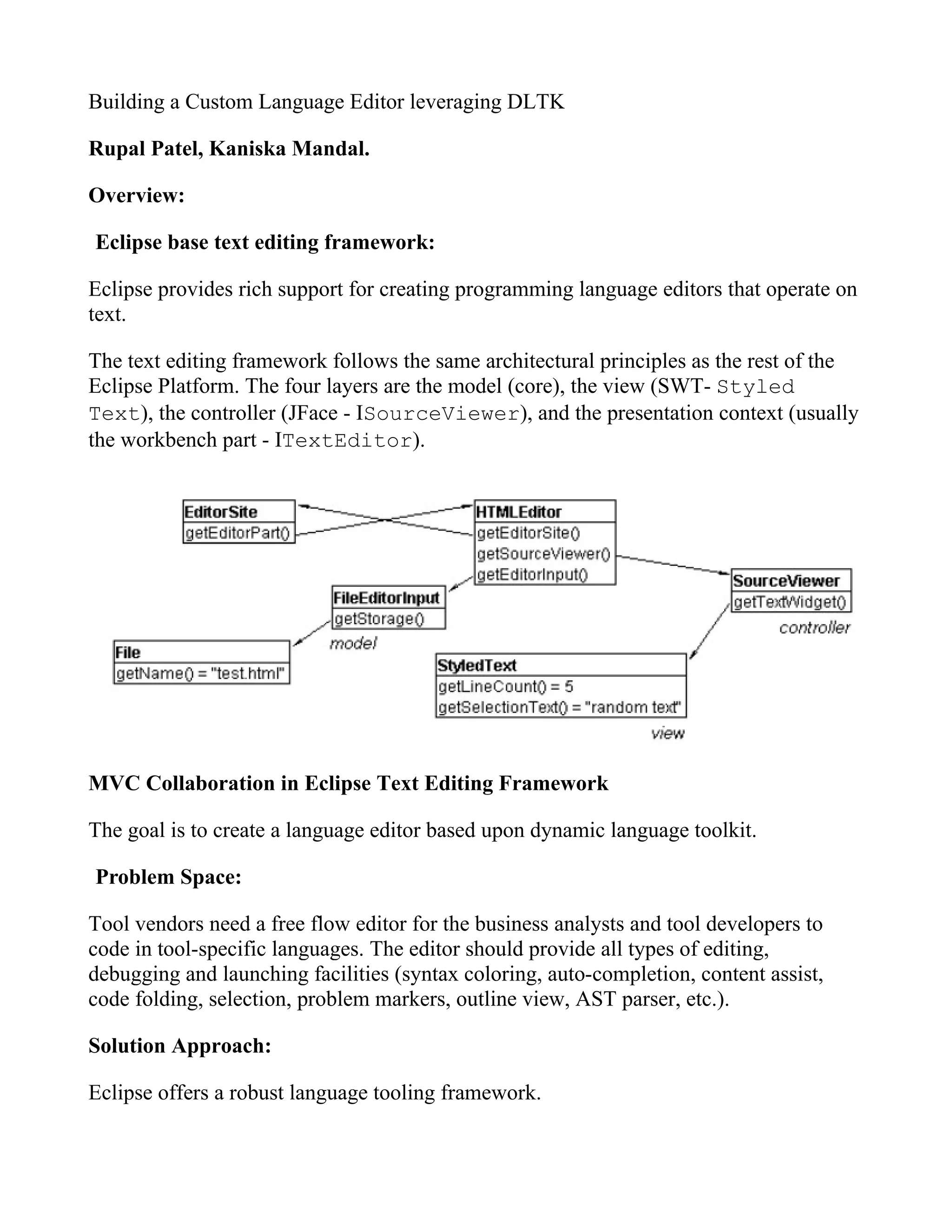
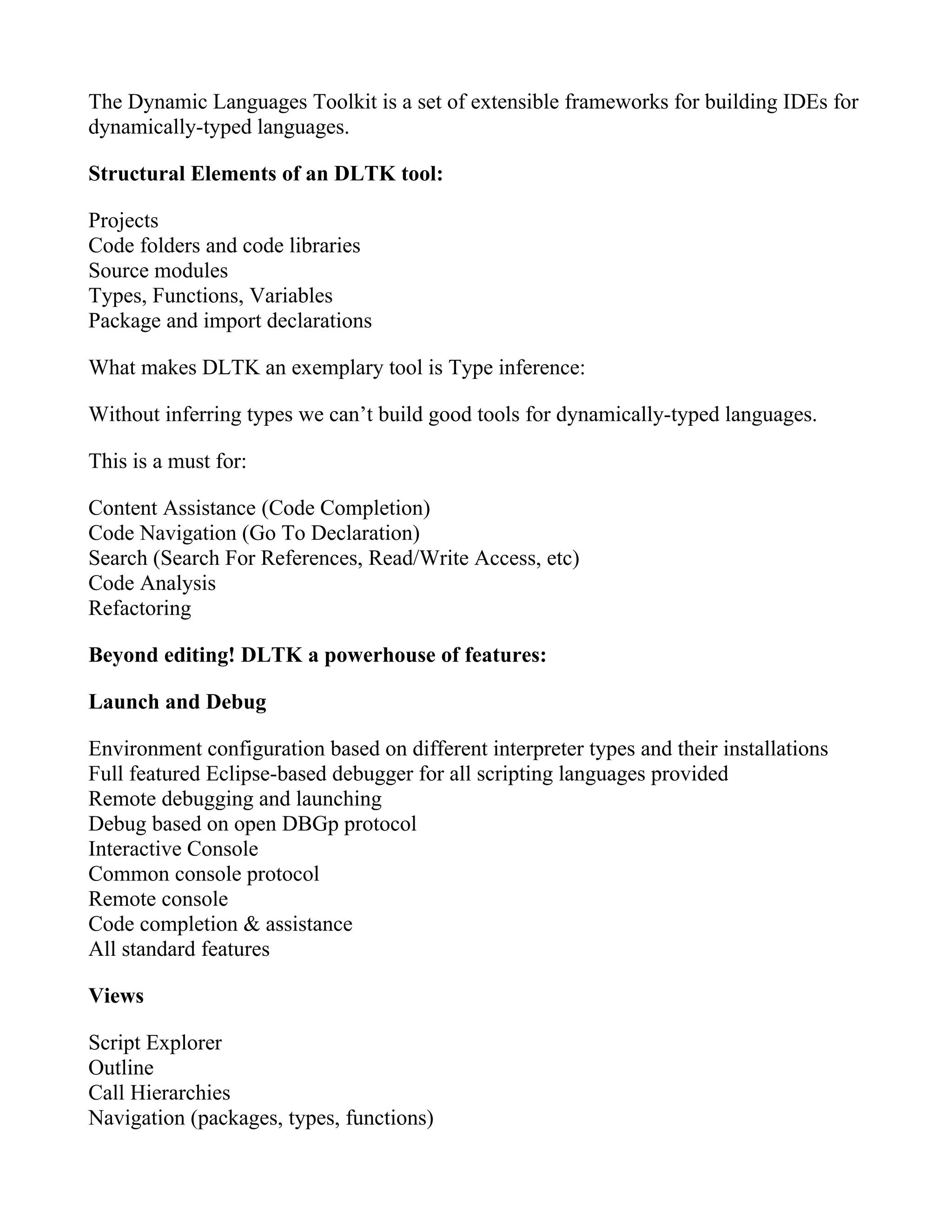
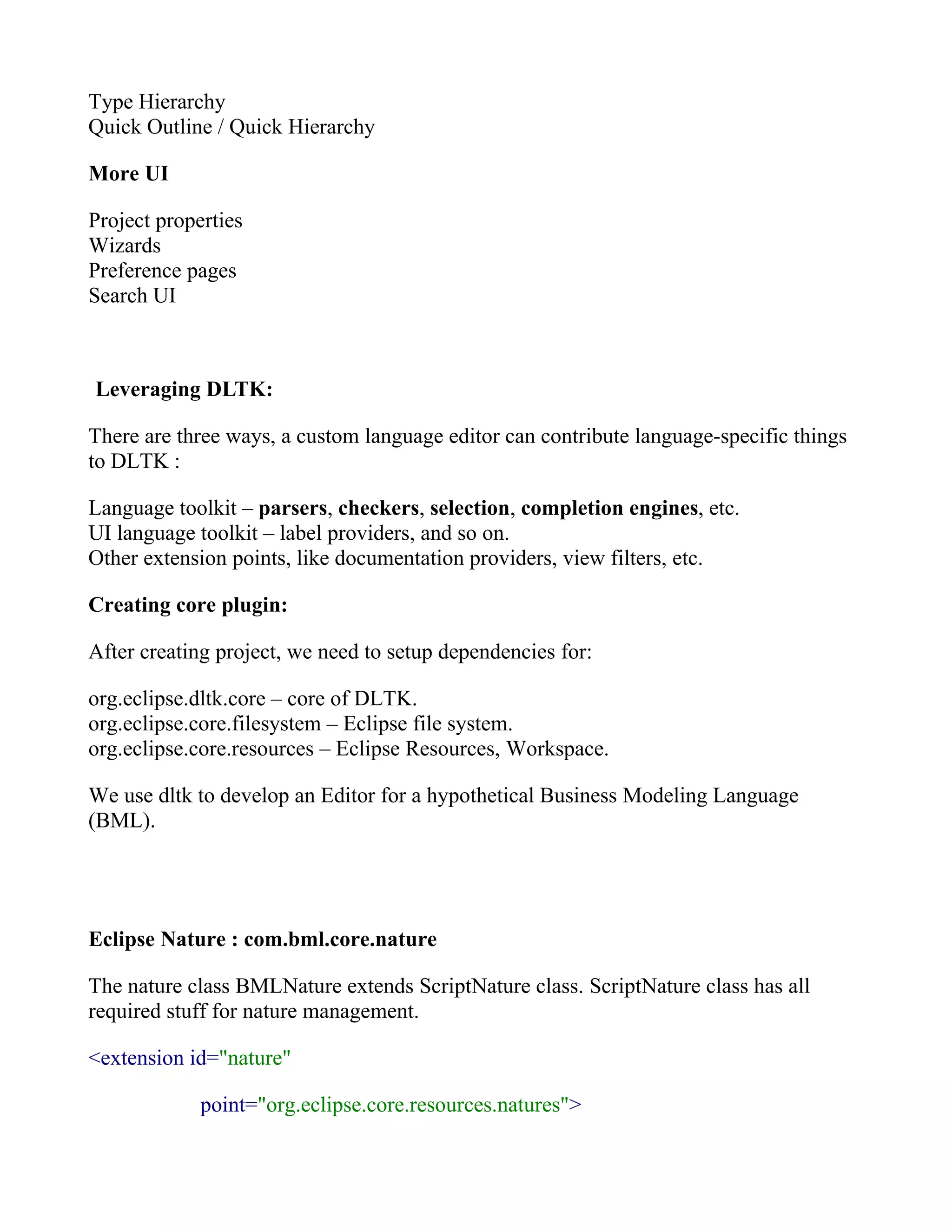
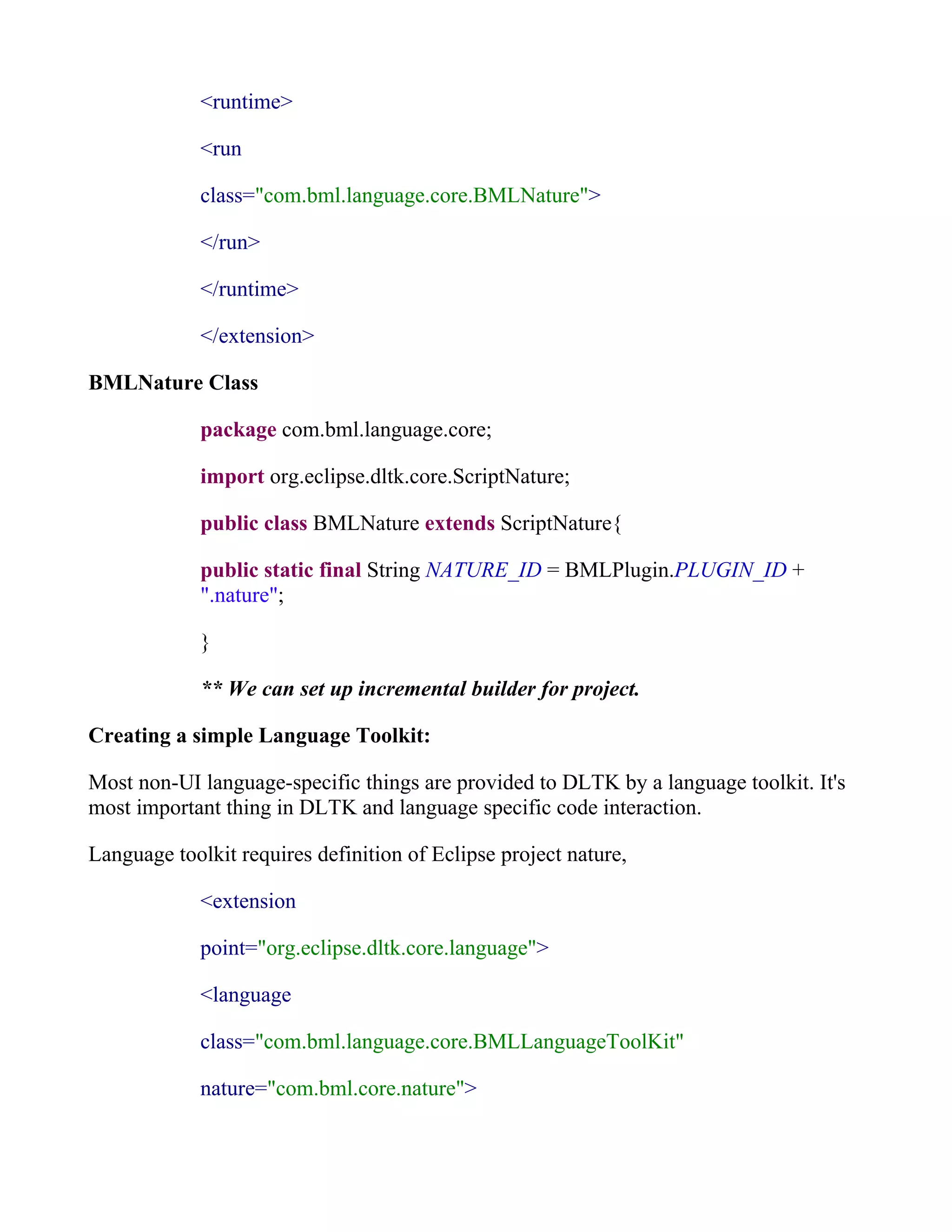
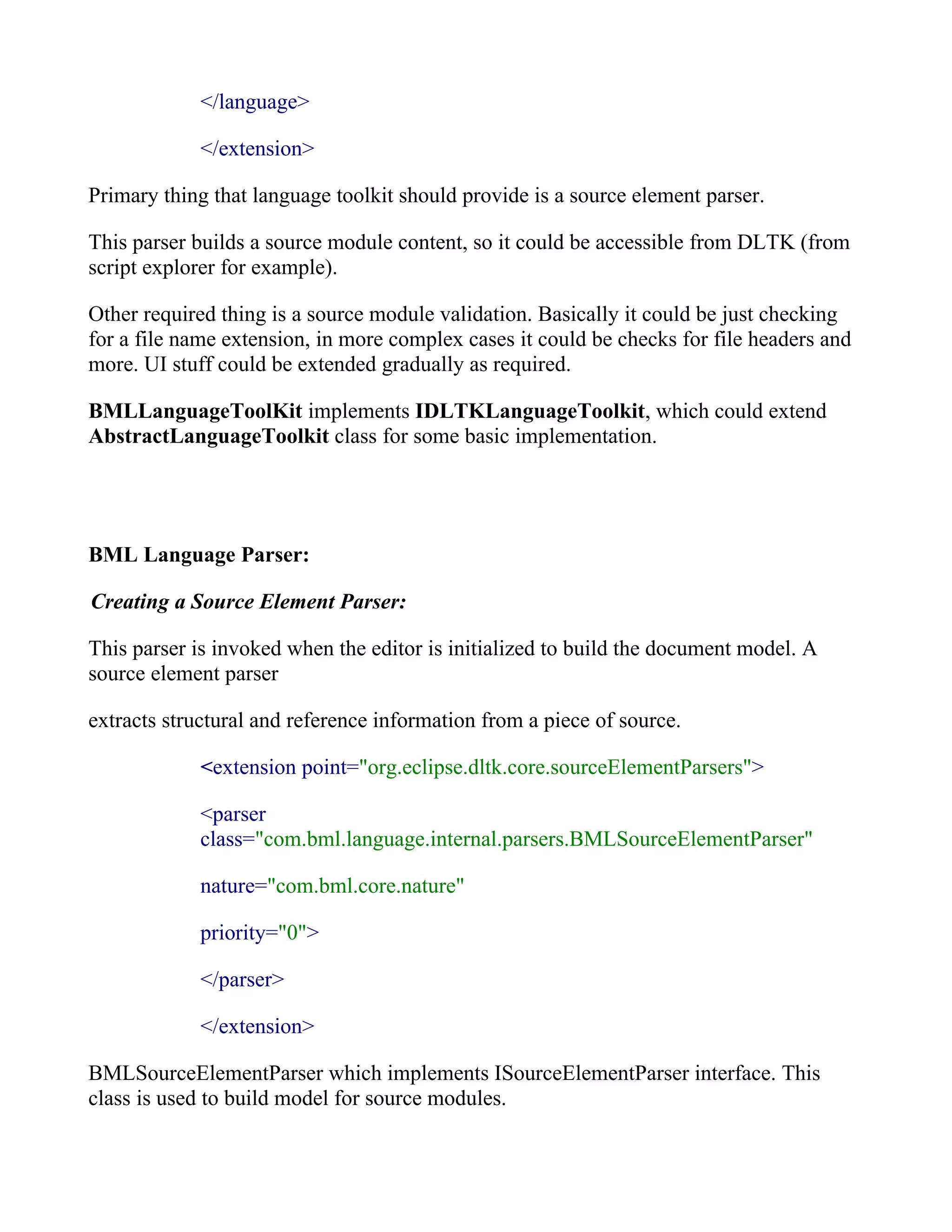
![public class BMLSourceElementParser implements ISourceElementParser
{
private ISourceElementRequestor fRequestor;
public ModuleDeclaration parseSourceModule(char[] contents,
ISourceModuleInfo astCashe, char[] filename) {
try {
sourceParser = (ISourceParser) DLTKLanguageManager
.getSourceParser(BMLNature.NATURE_ID);
} catch (CoreException e1) {
if (DLTKCore.DEBUG) {
e1.printStackTrace();
}
return null;
}
ModuleDeclaration moduleDeclaration = sourceParser.parse(null,
contents, null);
return moduleDeclaration;
}
public void setRequestor(ISourceElementRequestor requestor) {
this.fRequestor = requestor;
}](https://image.slidesharecdn.com/creatingalanguageeditorusingdltk-13004343755164-phpapp01/75/Creating-A-Language-Editor-Using-Dltk-6-2048.jpg)
![}
Extending Source Element parser to build correct model
For building model we provide ISourceElementRequestor interface which is passed to
the SourceElementParser when building content of source module. It works as visitor.
SourceElementParser should call methods to define model elements. i.e types, methods,
fields, package declarations.
public ModuleDeclaration parseSourceModule(char[] contents,
ISourceModuleInfo astCashe, char[] filename) {
ISourceParser sourceParser = null;
try {
sourceParser = (ISourceParser) DLTKLanguageManager
.getSourceParser(BMLNature.NATURE_ID);
} catch (CoreException e1) {
if (DLTKCore.DEBUG) {
e1.printStackTrace();
}
return null;
}
ModuleDeclaration moduleDeclaration = sourceParser.parse(null,
contents, null);
moduleDeclaration.disableRebuild();
List statements = moduleDeclaration.getStatements();
try {
fRequestor.enterModule();](https://image.slidesharecdn.com/creatingalanguageeditorusingdltk-13004343755164-phpapp01/75/Creating-A-Language-Editor-Using-Dltk-7-2048.jpg)
